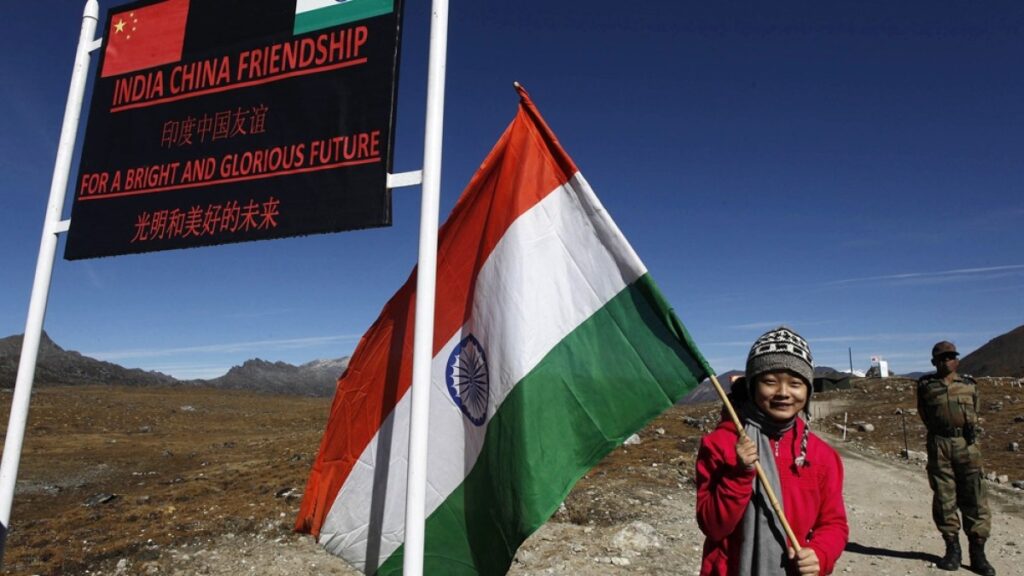
New Delhi, India – The geopolitical landscape in Asia is witnessing a significant shift as India and China move towards a more conciliatory relationship, potentially reshaping trade dynamics and challenging US influence in the region. Analysts suggest that this rapprochement could undermine the US-led Quad alliance and lead to the emergence of new Asian trade blocs.
Five years ago, the scene was markedly different. In February 2020, then US President Donald Trump was warmly received in India, marking a high point in US-India relations with a massive rally titled “Namaste Trump!” in Ahmedabad. This event underscored the burgeoning ties between the two nations, bolstered by Trump’s personal rapport with Indian Prime Minister Narendra Modi.
However, by June of that year, India’s relations with China deteriorated sharply following a deadly clash in the Galwan Valley, leading to the deaths of 20 Indian soldiers. In response, India banned over 200 Chinese apps and bolstered its defense cooperation with the US and the Quad, which includes Japan and Australia.
Shifting Geopolitical Winds
Recent developments indicate a thaw in India-China relations, partly spurred by Trump’s tariff policies. India, facing a 50 percent duty on its imports to the US, has found common ground with China amidst rapid geopolitical shifts. Political analysts argue that the Trump administration’s approach is undoing decades of strategic gains foundational to US influence in Asia, home to over 60 percent of the world’s population.
Earlier this week, Prime Minister Modi met with China’s Foreign Minister Wang Yi, emphasizing “respect for each other’s interests and sensitiveness” and “steady progress” in bilateral relations. This meeting marks a significant step towards mending ties, with both nations announcing confidence-building measures such as resuming direct flights and easing visa processes.
Economic Implications
Economists and trade experts note that improved India-China ties could mitigate the impact of US tariffs for both nations. With Washington raising barriers on key Indian exports, access to Chinese markets and smoother cross-border trade could help India reduce its reliance on the US market. In 2024-25, India recorded a trade deficit of $99.2 billion with China, highlighting the potential benefits of warmer relations.
“This could offer India some relief from Trump’s tariffs and mitigate the impact of strategic and economic vulnerabilities,” said Sana Hashmi, a fellow at the Taiwan-Asia Exchange Foundation.
For China, strengthening ties with India could enhance its influence in the Asia Pacific, countering the US-led Indo-Pacific strategy. “Closer ties with India would allow China to demonstrate that it, rather than the US, is a reliable economic and security partner,” Hashmi added.
Challenges and Limitations
Despite the positive developments, experts caution that deep-rooted challenges remain. India, like other nations, is attempting to derisk its supply chains by reducing overdependence on any one source, particularly China. This challenge is compounded by the new US tariffs, which have deepened India’s economic vulnerabilities.
“A thaw in relations may help normalize bilateral ties, but it is unlikely to transform them, as competition and conflict will persist,” Hashmi noted.
Impact on the Quad
Since the George W. Bush presidency, India has been viewed by Washington as a democratic counterweight to China. The Quad, formed to balance Beijing’s rise, has been a cornerstone of US strategy in the Asia Pacific. However, the warming India-China ties could complicate US efforts to isolate China in global institutions.
“If New Delhi were to align more closely with Beijing on issues like development financing and multilateral reform, it would undercut Washington’s narrative of rallying democracies against China,” said BR Deepak, professor of Chinese studies at Jawaharlal Nehru University.
Deepak suggested that a friendlier Beijing-Delhi line might temper India’s appetite for overtly anti-China positioning within the Quad, nudging the grouping towards a broader agenda.
Future Prospects
As India and China navigate this new phase in their relationship, the implications for regional trade and global geopolitics are profound. While the Quad’s strategic relevance remains intact, the evolving dynamics could redefine the balance of power in Asia. The US may need to recalibrate its approach to maintain its influence in the region.
Ultimately, the evolving India-China relationship underscores the fluid nature of international alliances and the complex interplay of economic and strategic interests in a rapidly changing world.





